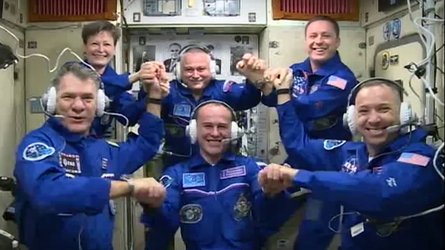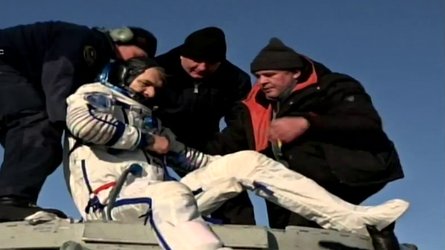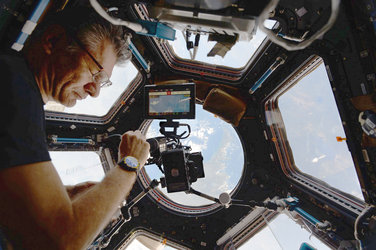Accept all cookies Accept only essential cookies See our Cookie Notice

About ESA
The European Space Agency (ESA) is Europe’s gateway to space. Its mission is to shape the development of Europe’s space capability and ensure that investment in space continues to deliver benefits to the citizens of Europe and the world.
Highlights
ESA - United space in Europe
This is ESA ESA facts Member States & Cooperating States Funding Director General Top management For Member State Delegations European vision European Space Policy ESA & EU Space Councils Responsibility & Sustainability Annual Report Calendar of meetings Corporate newsEstablishments & sites
ESA Headquarters ESA ESTEC ESA ESOC ESA ESRIN ESA EAC ESA ESAC Europe's Spaceport ESA ESEC ESA ECSAT Brussels Office Washington OfficeWorking with ESA
Business with ESA ESA Commercialisation Gateway Law at ESA Careers Cyber resilience at ESA IT at ESA Newsroom Partnerships Merchandising Licence Education Open Space Innovation Platform Integrity and Reporting Administrative Tribunal Health and SafetyMore about ESA
History ESA Historical Archives Exhibitions Publications Art & Culture ESA Merchandise Kids Diversity ESA Brand Centre ESA ChampionsLatest
Space in Member States
Find out more about space activities in our 23 Member States, and understand how ESA works together with their national agencies, institutions and organisations.
Science & Exploration
Exploring our Solar System and unlocking the secrets of the Universe
Go to topicAstronauts
Missions
Juice Euclid Webb Solar Orbiter BepiColombo Gaia ExoMars Cheops Exoplanet missions More missionsActivities
International Space Station Orion service module Gateway Concordia Caves & Pangaea BenefitsLatest
Space Safety
Protecting life and infrastructure on Earth and in orbit
Go to topicAsteroids
Asteroids and Planetary Defence Asteroid danger explained Flyeye telescope: asteroid detection Hera mission: asteroid deflection Near-Earth Object Coordination CentreSpace junk
About space debris Space debris by the numbers Space Environment Report In space refuelling, refurbishing and removingSafety from space
Clean Space ecodesign Zero Debris Technologies Space for Earth Supporting Sustainable DevelopmentApplications
Using space to benefit citizens and meet future challenges on Earth
Go to topicObserving the Earth
Observing the Earth Future EO Copernicus Meteorology Space for our climate Satellite missionsCommercialisation
ESA Commercialisation Gateway Open Space Innovation Platform Business Incubation ESA Space SolutionsEnabling & Support
Making space accessible and developing the technologies for the future
Go to topicBuilding missions
Space Engineering and Technology Test centre Laboratories Concurrent Design Facility Preparing for the future Shaping the Future Discovery and Preparation Advanced Concepts TeamSpace transportation
Space Transportation Ariane Vega Space Rider Future space transportation Boost! Europe's Spaceport Launches from Europe's Spaceport from 2012Latest
Vita hatch opening
Thank you for liking
You have already liked this page, you can only like it once!
ESA astronaut Paolo Nespoli, NASA astronaut Randy Bresnik and Roscosmos commander Sergey Ryazansky entered the International Space Station in the early hours of 29 July after a six-hour trip in their Soyuz MS-05 spacecraft. The Expedition 52/53 crew was launched from Baikonur cosmodrome in Kazakhstan on 28 July.
After orbiting Earth four times to catch up to the International Space Station, the car-sized spacecraft arrived at the Station six hours after launch. Paolo, Randy and Sergey will spend five months in space working and living on the International Space Station.
The Vita mission is the tenth long-duration mission for an ESA astronaut and the third mission to the Station for Paolo Nespoli.
Vita stands for Vitality, Innovation, Technology and Ability and was chosen by Italy’s ASI space agency, which is providing the mission through a barter agreement with NASA.
In Italian, “vita” means “life”, reflecting the experiments that Paolo will run and the philosophical notion of living in outer space – one of the most inhospitable places for humans.
Paolo’s extensive scientific programme includes experiments in biology, human physiology as well as space environment monitoring, materials science and technology demonstrations.
When not performing science, Paolo will work with his colleagues to maintain the Space Station and keep the orbital outpost running smoothly for the crew of six.
Follow Paolo and his mission via paolonespoli.esa.int and the mission blog for updates.
-
CREDIT
ESA - European Space Agency -
LICENCE
ESA Standard Licence
-
Live Footage
-
-
-
-
-
-
-

Paolo Nespoli enters the ISS

Vita: Launch, docking & hatch opening

Vita mission: Farewells to landing

Paolo Nespoli in Cupola















 Germany
Germany
 Austria
Austria
 Belgium
Belgium
 Denmark
Denmark
 Spain
Spain
 Estonia
Estonia
 Finland
Finland
 France
France
 Greece
Greece
 Hungary
Hungary
 Ireland
Ireland
 Italy
Italy
 Luxembourg
Luxembourg
 Norway
Norway
 The Netherlands
The Netherlands
 Poland
Poland
 Portugal
Portugal
 Czechia
Czechia
 Romania
Romania
 United Kingdom
United Kingdom
 Slovenia
Slovenia
 Sweden
Sweden
 Switzerland
Switzerland

























